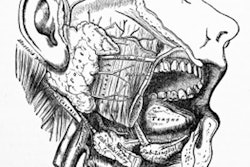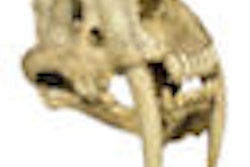A new examination of teeth from 11 Neanderthal and early human fossils shows that modern humans are slower than our ancestors to reach full maturity (Proceedings of the National Academy of Sciences, November 15, 2010). The finding suggests that our characteristically slow development and long childhood are recent and unique to our own species and may have given early humans an evolutionary advantage over Neanderthals.
The research was led by scientists at Harvard University, the Max Planck Institute for Evolutionary Biology, and the European Synchrotron Radiation Facility.
"Teeth are remarkable time recorders, capturing each day of growth much like rings in trees reveal yearly progress," said Tanya M. Smith, PhD, an assistant professor of human evolutionary biology at Harvard, in a press release. "Even more impressive is the fact that our first molars contain a tiny 'birth certificate,' and finding this birth line allows scientists to calculate exactly how old a juvenile was when it died."
Compared to even early humans, other primates have shorter gestation, faster childhood maturation, younger age at first reproduction, and a shorter overall lifespan. It's been unclear exactly when, in the 6 million to 7 million years since our evolutionary split from nonhuman primates, the life course shifted.
Smith and her colleagues found that young Neanderthals' teeth growth -- a proxy for overall development -- was significantly faster than in our own species, including some of the earliest groups of modern humans to leave Africa some 90,000 to 100,000 years ago. This indicates that the elongation of childhood has been a relatively recent development.
Such studies add to the growing body of evidence that subtle developmental differences exist between us and our Neanderthal cousins. The recent sequencing of the Neanderthal genome has provided tantalizing genetic clues pointing to differences in cranial and skeletal development between Neanderthals and modern humans.
The current study involves some of the most famous Neanderthal children ever discovered, including the first hominin fossil, discovered in Belgium in the winter of 1829-1830. This individual was previously thought, based on comparisons with modern humans, to have been 4 to 5 years old at the time of death. Now, powerful synchrotron x-rays and biological rhythms inside teeth have revealed the child was only 3 years old.
While counting lines in teeth isn't a new method, Smith says, doing it "virtually" using synchrotron microcomputed tomography is.
"These new methods present a unique opportunity to assess the origins of a fundamentally human condition: the costly yet advantageous shift from a primitive 'live fast and die young' strategy to the 'live slow and grow old' strategy that has helped to make humans one of the most successful organisms on the planet," Smith said.
Copyright © 2010 DrBicuspid.com



















